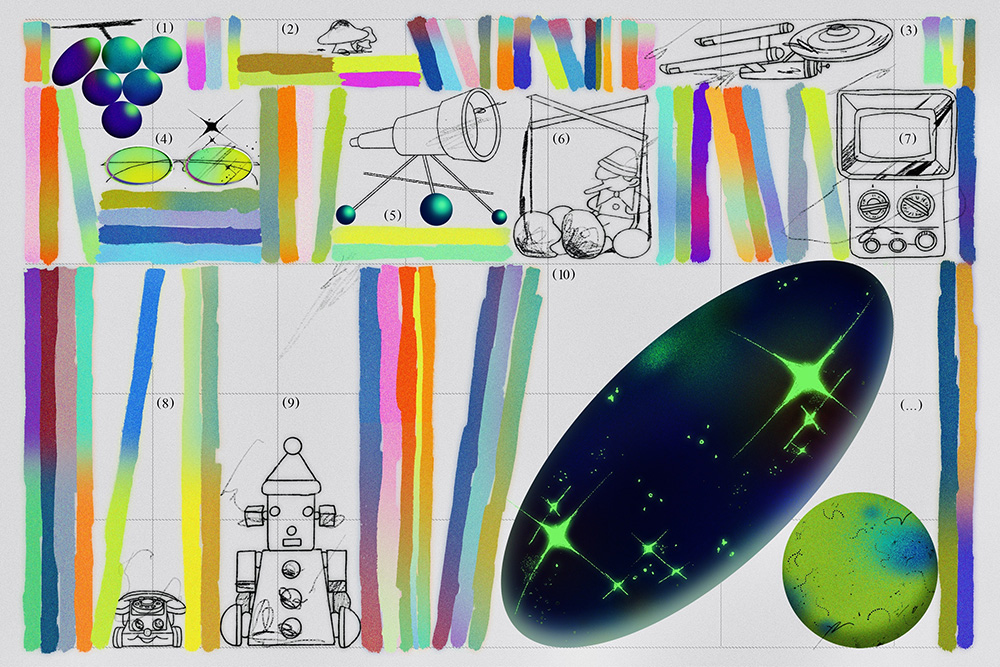
November 3, 2017
The Architecture of Graphic Design’s Discourse
Graphic design is the fastest of the design disciplines—Chip Kidd has designed over 1000 published book covers so far. In contrast, architecture is the slowest—Frank Lloyd Wright designed 532 built structures in his lifetime. The physical weight of architecture is mirrored by the cultural weight of architectural writing. Architecture’s critics garner audiences wide enough to warrant in-house positions at major publications, and its theoretical canon extends back to antiquity. By comparison, graphic design’s theoretical canon is newsprint thin.
Although they operate at different speeds, and their writing cultures exist at different scales, digging past the technical topsoil of graphic design and architecture reveals a shared process. Both begin by surveying needs, and both end with inventions that sit at the intersection of utility and aesthetics. This common ground begs the question: If graphic designers and architects are writing about the same fundamental process from different angles, do graphic designers have an advantage because they move through that process more quickly? More complete cycles mean more opportunity for insight. By this logic, graphic designers should be viewed as the theoreticians of the design disciplines. Yet, by and large, we are not.
On a recent episode of Scratching the Surface, Jarrett Fuller’s podcast about design writing and practice, Juliette Cezzar—designer, author, and professor extraordinaire—shared some thoughts on why graphic design’s theoretical culture has yet to achieve parity with architecture’s. That is, beyond the fact that graphic design is a younger field.
“When I talk to anybody in my field now—anything that I mention—I can’t make an assumption that they know what that is. You have to ask the question of ‘Why not?’ A lot of the ‘why not’ that I’ve heard in the past is, well, people just aren’t writing. But graphic designers are writing all the time. It’s the reception. Architects are indoctrinated into this feeling that if you don’t know what’s going on, then you’re lesser than. There’s a lot of pressure to be in the know, and that’s a binding thing in a lot of ways. Graphic design writing doesn’t have that kind of audience.”
Cezzar aptly expands the responsibility for building a robust design discourse past the activities of writers to encompass the activities of readers. She goes on to say that architecture’s current theoretical culture did not evolve organically from a critical mass of its writers alone. Instead it was built purposefully, with determination, by groups of architects who were as active in their reading as they were in their writing. Offering an example, she points to the work and influence of the Institute for Architecture and Urban Studies (IAUS). Between 1967 and 1984, through a combination of classes, events, and publications, IAUS played a role in reshaping the way architecture was perceived in the United States by promoting architectural theory. A nonprofit supported at various points by MoMA, Cornell University, and client donors, it stands as a model of what can be achieved when design theory is buoyed by financial investment.
In a follow-up conversation, Cezzar noted that, conversely, many of the venerated pillars of graphic design’s theoretical canon were merely promotional vehicles for firms and foundries—for instance, U&lc and Émigré. Today, thanks to the digital era, the cost of influence has plummeted, which has resulted in many new outlets for graphic design theory and criticism. Relatively recent examples have included Speak-Up/Under-Consideration, A List Apart, and Design Observer—to name a few standouts. Add to that the myriad design-themed magazines, book publishers, and personal blogs. Graphic design writers have more outlets today than ever before. But, again, writing on its own is not enough to build a discourse.
In addition to the aforementioned role of readers and institutions, the topics graphic designers choose to write about also shape the conversation. At the end of each episode of Scratching the Surface, Fuller asks his interviewees what they wish graphic designers were writing about. Not one of them has called for more critiques of recently launched branding. Their answers provide a blueprint for a more human-centered discussion. Many of those answers have been collected into a list below. If you’re a designer who is drawn to writing, consider these bullets as points of departure:
- Define what it means to design inclusively
- Discuss design’s role in racism and/or sexism
- Describe design sustainability
- Reimagine design education
- Delineate design’s responsibility to the truth
- Define design research
- Explore design’s role in overconsumption
- Discuss the efficacy of design activism
- Analyze design’s role in marginalization
- Describe design as self-reflection
- Write about things unrelated to design from the perspective of a designer
- Write about design in a way that’s accessible to non-designers
- Describe the impact of technological evolution on the design field
- Explore the impact of the democratization of design tools and knowhow on the design field
We’ve looked at the architecture of graphic design’s discourse—its readers, institutions, writers, and topics—but we haven’t “scratched the surface” in terms of understanding why any of it matters. Fuller often asks his interviewees: Does it matter if graphic designers are reading and writing about design? Does it have any impact at all on the daily practice of our discipline?
Vitruvius, the Roman author and architect, wrote about the impact of theory on practice in De Architectura (circa 30–15 BCE), the earliest known work of architectural theory.
“Architects who have aimed at acquiring manual skill without scholarship have never been able to reach a position of authority to correspond to their pains, while those who relied only upon theories and scholarship were obviously hunting the shadow, not the substance. But those who have a thorough knowledge of both have sooner attained their object and carried authority with them.”
Designers have long been concerned with their authority. Modernism sought authority through a universality of form; design thinking sought it through a universality of application. Both were/are looking for external validation, but the highest authority comes from knowledge of self. Theory is simply another name for a well-examined practice. Reflecting on actions and their repercussions is essential for growth. It’s also worth noting that reading about theory and writing about theory impact the growth of a practice differently. Reading expands awareness, broadens definitions, and draws connections across space and time. Writing excavates thinking, defines perspectives, and brings patterns into focus.
I’m a designer charged with the daily design direction of an ever-growing list of print and digital products and services. And yes, reading and writing about design theory has grown my practice in more ways than I can recount. Speaking broadly, it has changed the way I feel about and understand what I do, which has helped me to improve the ways that I do it. But there’s much more. In my view, the field of graphic design will only be able to achieve its full potential once it sits atop a foundational culture of voracious readers and writers. By reading this essay you have laid a brick in the building of that culture, and for that I thank you.
Observed
View all
Observed
By Brian LaRossa
Recent Posts
“Dear mother, I made us a seat”: a Mother’s Day tribute to the women of Iran A quieter place: Sound designer Eddie Gandelman on composing a future that allows us to hear ourselves think It’s Not Easy Bein’ Green: ‘Wicked’ spells for struggle and solidarity Making Space: Jon M. Chu on Designing Your Own Path



